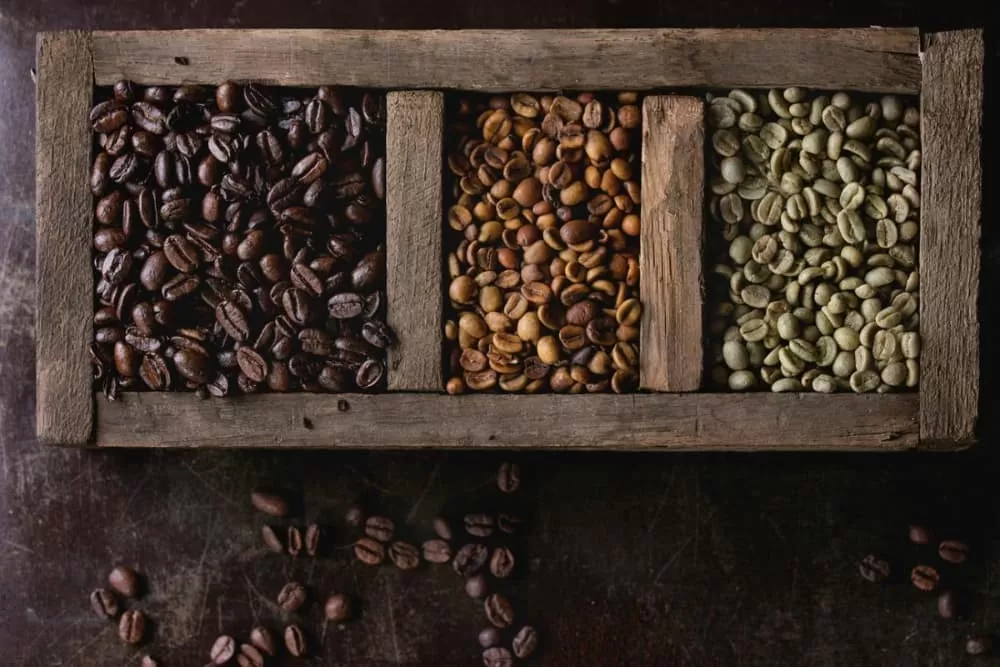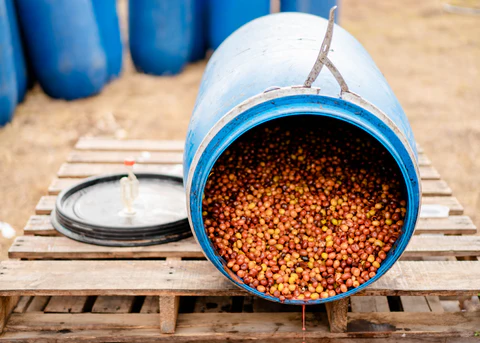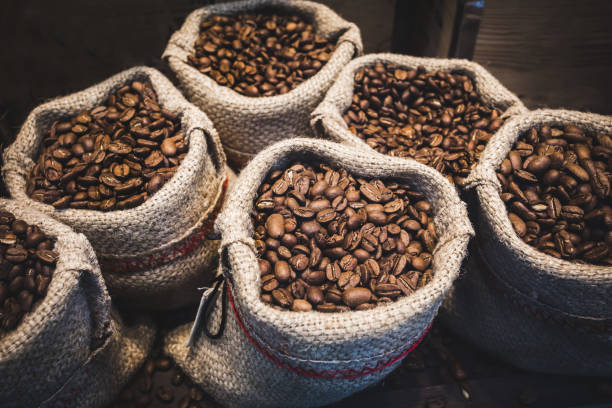Hey coffee lovers! Today, we’re diving into the world of espresso acidity. I know, I know—acidity sounds scary, like the stuff that ruins your favorite pair of jeans. But in the espresso world, acidity is a key player in creating that bright, flavorful cup that keeps you coming back for more. So let’s break it down!
What is Espresso Acidity?
Before we dive deeper into the caffeinated cosmos of espresso acidity, let’s make sure we’re on the same page. What exactly is espresso acidity, you ask?
Simply put, it’s the vibrant, tangy, and lively notes that dance on your taste buds when you take that first sip of espresso. Think of it as the coffee’s way of saying, “Hello, wake up and taste the sunshine!” It’s that delightful brightness that can remind you of citrus fruits, berries, or even a touch of sparkling effervescence.

Why Is Acidity Important?
- Flavor Complexity: Acidity adds depth and dimension to your espresso. Without it, your coffee could taste flat and one-dimensional.
- Balance: It balances out the bitterness and sweetness, creating a harmonious flavor profile that dances on your taste buds.
- Freshness Indicator: High acidity is often a sign of fresh, high-quality beans. If your espresso tastes dull, it might be time to check the roast date on your beans.

Factors Affecting Espresso Acidity
- Bean Origin: Coffees from different regions have distinct acidity levels. African coffees, especially Ethiopian, are known for their bright acidity, while Brazilian coffees tend to be smoother and less acidic.
- Roast Level: Lighter roasts preserve the bean’s natural acidity, giving you those fruity, citrusy notes. Darker roasts reduce acidity but increase bitterness and body.
- Brewing Technique: The way you brew your espresso also impacts acidity. Temperature, grind size, and extraction time all play a role. Generally, a finer grind and higher temperature will highlight the acidity.
How to Taste Acidity
When you’re tasting your espresso, look for sharp, lively flavors. Acidity can present itself in many forms, such as:
- Citrusy: Think lemon, lime, or orange zest.
- Fruity: Green apple, berry, or even tropical fruits.
- Wine-like: Some high-acidity coffees can have a wine-like tanginess.

Balancing Acidity in Your Espresso
If you find your espresso too acidic, don’t worry. There are ways to balance it out:
- Adjust the Grind: A coarser grind can help mellow out the acidity.
- Change the Temperature: Lowering the brewing temperature can also reduce acidity.
- Blend with Milk: Adding milk or cream can smooth out the tangy edges, making for a more balanced cup.
Step-by-Step Instructions to Embrace Espresso Acidity
Alright, coffee adventurers, now that you’re onboard with the importance of espresso acidity, it’s time to roll up those sleeves and get into the nitty-gritty of how to fully embrace it in your daily brew. Think of this as your espresso acidity survival guide.
Step 1: Bean Selection
Welcome to the first step in our quest to master espresso acidity: Bean Selection. This is where it all begins, where the flavor journey takes flight. So, let’s dive right in and explore how choosing the right beans can make all the difference in your coffee cup.
Why It Matters: The coffee beans you pick are like the cast of characters in a great novel. They each bring their unique traits to the story. When it comes to acidity, the bean variety plays a starring role. Certain coffee varieties, like Ethiopian Yirgacheffe or Kenyan AA, are known for their bright and zesty acidity, while others might offer a more subtle, fruity tang.

How to Execute It:
- Know Your Beans: Familiarize yourself with different coffee bean varieties and their flavor profiles. Experiment with single-origin coffees to taste the full range of acidity possibilities.
- Freshness is Key: Opt for freshly roasted beans. Acidity tends to diminish with time, so the fresher, the better.
- Roast Level: Light to medium roasts generally preserve acidity better than dark roasts. Look for beans with a roast level that aligns with your acidity preferences.
- Explore Blends: Consider trying blends that combine beans with varying acidity levels. This can lead to a more complex and balanced flavor.
Step 2: The Grind Game
Welcome back, fellow coffee aficionados! We’re on our way to mastering espresso acidity, and now it’s time to tackle Step 2: The Grind Game. You might be surprised to learn just how crucial the grind size is when it comes to embracing acidity in your espresso.
Why It Matters: The grind size of your coffee beans can make or break your espresso. It affects the extraction process, which, in turn, influences the acidity level in your brew. If the grind is off, you might end up with either a flat, underwhelming cup or an overly acidic one.

How to Execute It:
- Grind Consistency: Invest in a high-quality burr grinder. Consistency is key. Aim for a medium to fine grind for espresso, similar to table salt.
- Dose It Right: Use the right amount of coffee grounds. A standard dose is around 18-20 grams for a double shot. Adjust if needed to find your perfect balance.
- Extraction Time: Pay attention to the extraction time. Ideally, you’re looking for a 25-30 second extraction. This helps extract the desirable acidity without overdoing it.
- Taste Test: Don’t forget the taste test! A well-balanced shot should have a bright acidity that complements the other flavors without overpowering them.
Step 3: Precise Measurements
Welcome back, espresso enthusiasts! We’re moving right along in our journey to uncover the secrets of espresso acidity, and now it’s time for Step 3: Precise Measurements. Just like a chef carefully measures ingredients for a gourmet dish, measuring your coffee and water is essential for that perfect espresso.
Why It Matters: The balance of coffee to water is critical in achieving the right level of acidity in your espresso. Too much or too little of either can throw off the entire flavor profile.

How to Execute It:
- Use a Scale: Invest in a kitchen scale to measure your coffee grounds accurately. Aim for a 1:2 coffee-to-water ratio for a double shot. That’s around 18-20 grams of coffee for 36-40 grams of water.
- Water Quality: Use clean, filtered water. The quality of your water affects the taste of your espresso, including its acidity.
- Temperature Matters: Ensure your water temperature is between 195-205°F (90-96°C). This temperature range helps extract the desired flavors, including acidity, from the coffee grounds.
- Brewing Time: Keep an eye on the brewing time. You’re aiming for that sweet spot of 25-30 seconds for a double shot. Adjust your grind size if the extraction time is off.
- Taste and Adjust: Always taste your espresso. This is where you’ll fine-tune your skills and make adjustments to achieve the perfect balance of acidity.
Key Considerations
Welcome back to our espresso acidity adventure, my fellow coffee lovers! You’ve learned about beans, grind size, and precise measurements, but we’re not done yet. Before we take our espresso game to the next level, let’s dive into some key considerations that will ensure your success in embracing espresso acidity.
- Balancing Act: Remember that espresso acidity is like a tightrope walk. It’s all about balance. If your shot is too acidic, it can be overpowering. On the other hand, if it’s too mellow, you’ll miss out on those vibrant flavors. Experimentation is your ally here. Tweak your grind, dose, and extraction time until you hit that sweet spot.
- Freshness Matters: Espresso beans are at their best within a few weeks of roasting. As they age, the acidity can fade. So, always opt for freshly roasted beans to maximize that zesty punch.
- Brewing Equipment: Invest in quality brewing equipment. A good espresso machine and grinder make a world of difference in your ability to control acidity and flavor extraction.
Final Thoughts
Embrace the acidity in your espresso! It’s what makes each cup unique and exciting. Play around with different beans, roasts, and brewing techniques to find your perfect balance. And remember, the world of espresso is vast and full of flavor adventures waiting to be explored.
Got any questions or tips on managing acidity in espresso? Drop them in the comments below! And as always, keep brewing and stay caffeinated!
Disclosure: Our blog contains affiliate links to products. We may receive a commission for purchases made through these links. However, this does not impact our reviews and comparisons. We try our best to keep things fair and balanced, in order to help you make the best choice for you.





